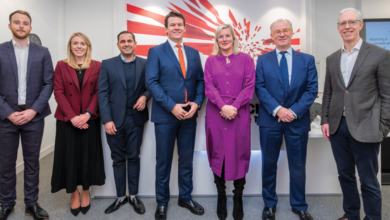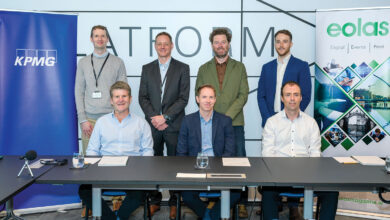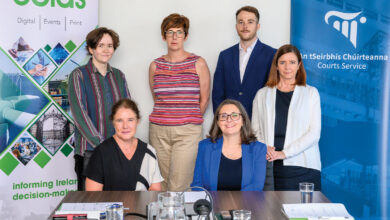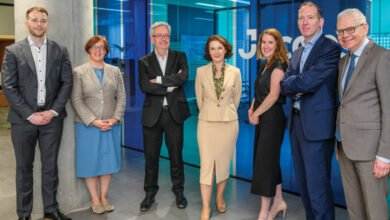Enhancing the resilience of Ireland’s critical infrastructure
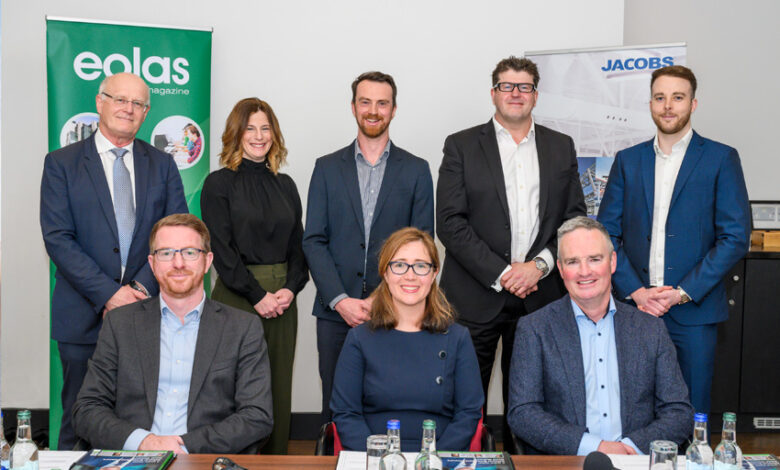
Amid increasing dependency and interdependency, Jacobs hosted a round table discussion with key semi-state and private stakeholders from across the critical infrastructure community seeking to determine how Ireland might enhance the resilience of its infrastructure.
What does increasing complexity, dependency, and interdependency between critical infrastructure assets mean for the critical infrastructure community/the resilience value chain?
Mitch Tunikowski
We are inescapably dependent on each other to create resilient infrastructure. Individual organisations cannot singlehandedly address the increasing complexity, dependency, and interdependency between critical infrastructure assets. I believe we must work towards delivering shared infrastructure corridors, sweating existing assets in the process. However, from a legal perspective, the way the critical infrastructure community is structured and funded is hindering many potential solutions. In the housing sector, the Land Development Agency has shown us that a commercial state-sponsored body can be effective. Is there scope, therefore, for an LDA-style body in the critical infrastructure space?
Marian Troy
Dependency and interdependency evolve and becomes more complex over time. Operating a traditional thermal power station requires a supply of water and fuel, such as natural gas so we already have interdependency between critical infrastructure. As decarbonising our electricity generation is renewables-led, our old assumptions are changing. Power station operations now respond to fluctuations in wind, solar, and demand – the electricity system operator must plan and operate the grid to ensure that security of supply is maintained. Likewise, sectors such as transport and heat rely more and more on a secure and decarbonised electricity supply, which alters the demand profile. It is incumbent on policymakers and regulators to determine what the system of the future will look like so that we can build the infrastructure required for the coming decades.
Pat Maher
Consider the M50, Dublin Port Tunnel, Dublin Port, and Dublin Airport. Historically, people have not considered the interaction and interdependence of these assets. That is changing. Dublin Port handles around 85 per cent of all the unitised traffic entering the State. Similarly, Dublin Airport accounts for 85 per cent of passenger traffic entering Dublin. A very high percentage of that traffic must then travel via the tunnel or the M50. It is important for TII, therefore, to better explain how critical its infrastructure assets are, not alone in terms of the movement of people, but also in relation to its interaction with Dublin Port and Dublin Airport. As such, any potential impact of a lack of resilience could impact severely on other assets and transportation modes, and this is replicated across many interfaces. It is important for each of our organisations to be aware, not only of the infrastructure assets we are managing, but of how they interface with all the other critical infrastructure that Ireland depends upon.
Paul Lennon
There is no doubt that we are becoming more dependent and interdependent. There are advantages to this. For example, adopting a whole system approach can provide significant benefits for resilience across the overall system. However, this hinges on careful integration. Smart technologies, predictive modelling, and real time data enable us to better integrate our various systems. As Marian mentioned, the wider energy system is becoming increasingly complex amid greater penetration of renewable energy. This reality has transformed how we will operate the gas network into the future; it is becoming increasingly coupled to wind now as power generation is our biggest demand sector. As well as decreasing emissions, decarbonising the gas network has the potential to enhance the overall resilience of the energy system as we transition away from having one large entry point from Scotland to having many indigenous supplies of green hydrogen and biomethane.
Sean Laffey
In the past, our problems were siloed, and we dealt with them in isolation. That has changed. While prevailing challenges impact us in different ways, ultimately, they are shared, and we can only mitigate them through collaboration. Uisce Éireann recently completed a programme called Project 2050 which examined the impact of climate change on water and wastewater systems in this country out to 2050. Of the key themes which have emerged, collaboration has assumed primacy. With increasing integration of critical infrastructure, collaboration will grow organically out of necessity. As a grouping, therefore, we must begin collaborative scenario planning. If we can do this, we will enhance our collective resilience.
Paul Hendrick
While other countries have been making advancements since the 1960s, Ireland has been experiencing a period of chronic underinvestment in infrastructure in general. Now, however, we have no choice but to move forward with the electrification of our rail network as per Iarnród Éireann’s long-term strategy and the DART+ programme. A natural outworking of this is enhanced collaboration with ESB Networks. Our 2,220km of rail network will not be electrified overnight, it will take decades. As such, we must focus on our InterCity lines, collaborating with ESB Networks to deliver the required grid infrastructure. As part of the transition to electrified mass transit, we must install overhead line infrastructure along the InterCity network, including Dublin-Belfast, Dublin-Cork, Dublin-Galway, Dublin-Limerick, and Dublin-Waterford. Similarly, we are working very closely with our Translink colleagues in the North to enhance the Enterprise fleet which is approaching its end of life by the end of this decade. When we speak of resilience priorities, we must renew that fleet. We hope to tender the procurement of a new fleet with twice as much rolling stock so that we can provide an hourly service and improve journey times, increasing the attractiveness to commuters.
What measures has your organisation undertaken to continuously improve the resilience of its critical infrastructure?
Paul Lennon
Improving infrastructure resilience is a long-term project, and one which must consider the whole asset life cycle. In 2009, Gas Networks Ireland, then Bord Gáis Éireann, modernised and restructured its networks business to make it more asset and data centric. Establishing an asset management department and creating an asset management development programme heralded new processes, systems and a detailed suite of policies, procedures, and specifications for all our assets, over their entire life cycle. That has been a foundation for us to layer on top other priorities such as sustainability, biodiversity, and resilience. More recently, we have integrated our five management systems together into one system, which has been hugely beneficial in cultivating a full appreciation for the resilience that we have and require. Additionally, a major focus for us in recent years is the cybersecurity threat to our assets and in response we established a specialised cybersecurity team.
Mitch Tunikowski
Jacobs, like most businesses, sets an horizon strategy, and this recognises the growing threats of cyber-attack and of climate change. We understand that this is a once-in-a-generation connectivity challenge. Therefore, we are positioning ourselves to not only offer the ‘nuts and bolts’ engineering solutions, but also create smart solutions which address the complementary challenges facing most organisations. For example, we have made several tactical acquisitions around cyber operational technology and cyber-IT. In addition, we have invested in the development of a number of tools such as the Carbon First and the Climate Risk Manager platforms for deployment on client projects.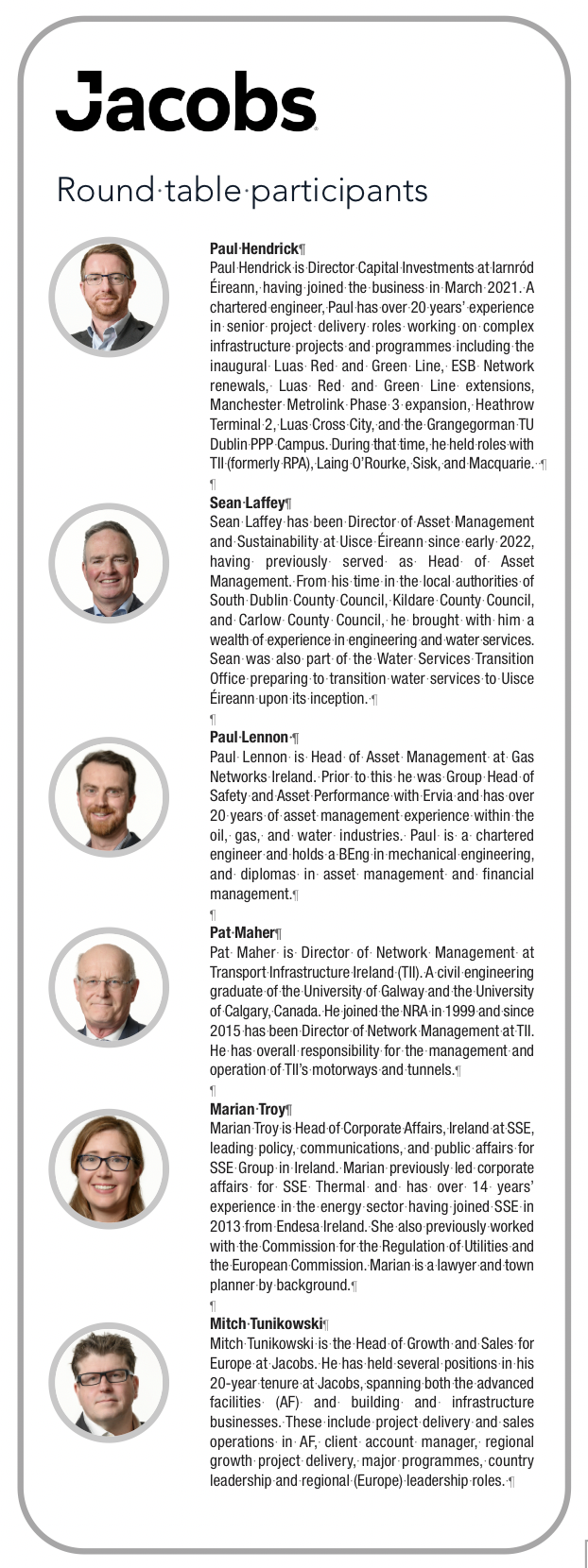
Marian Troy
SSE plc is a clean energy champion. We want to stay ahead of the challenge of our time, the climate emergency. Each of our strategies and projects aim to deliver a complementary mix of low-carbon technologies, and we have proactively set our own science-based carbon reduction targets. As well as staying ahead of climate policy, we strive to be resilient to extreme weather events and have developed continuity plans to maintain asset integrity.
Sean Laffey
Uisce Éireann’s footprint is huge. Our network includes 63,000km of pipelines to supply treated drinking water, 25,000km of wastewater pipelines, 750 water treatment plants, and 1,100 wastewater treatment plants. One of the major projects undertaken at our inception 10 years ago was to understand our asset base and then build long-term plans around those assets. In 2022, we published the 25-year National Water Resources Plan for our supply of drinking water and we are developing something similar on wastewater. However, we have sight of the impacts of climate change, and we recognise that much of the water resources we currently rely on are unsustainable in the long term. There is no short-term solution to addressing these challenges. Over 25 years, we estimate €60 billion will be required to bring our networks and treatment plants up to standard and to instil resilience.
Pat Maher
Resilience is a long-term endeavour and we have made notable progress on our operational resilience to extreme weather events in recent years. In 2021, we published our Sustainability Implementation Plan, Our Future, followed in 2022 by our updated Climate Adaptation Strategy. It is notable that extreme weather events are becoming more severe and unpredictable. Sooner or later, a major rainfall event will happen that will shock the country. TII’s role is to make the national road network as resilient as possible in the face of that inevitable challenge. However, we have significant institutional roadblocks, for example, aspects of our environmental legislation do not facilitate quick and agile responses. We must do more to influence central government and policymakers, and the best way to do so is as a collective of state asset owners.
Paul Hendrick
As an organisation with much of its infrastructure and technology dating from the 1970s, Iarnród Éireann has many ongoing projects and programmes in relation to enhancing its resilience. The most significant project for us right now is the construction of a new National Train Control Centre at Heuston Station, which will replace the control room at Connolly Station which is facing capacity constraints as its IT systems near life expiration. When the new NTCC becomes operational in 2025, we plan to repurpose Connolly as a backup facility. As well as building our own resilience, the project has also been a major source of collaboration with partners such as Dublin City Council and An Garda Síochána on future operations.
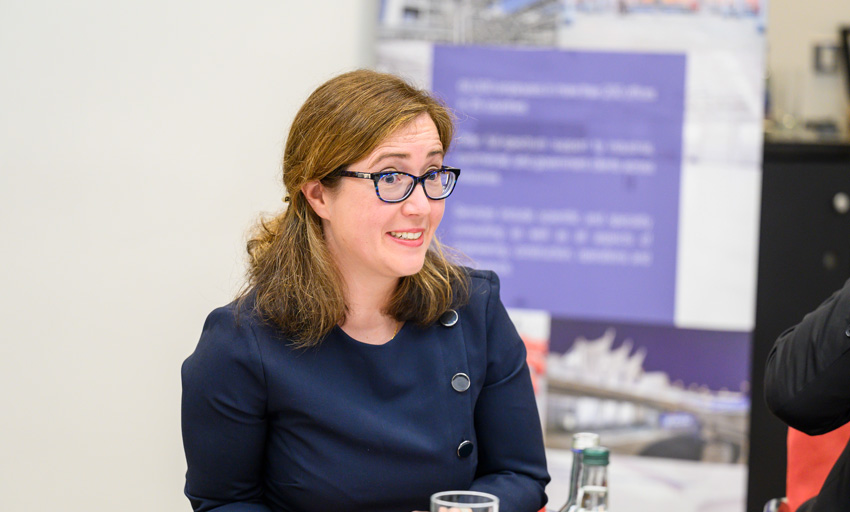
“It is incumbent on policymakers and regulators to determine what the system of the future will look like so that we can build the infrastructure required for the coming decades.” Marian Troy
How can government better support semi-states and the private sector to ensure that the critical infrastructure assets they operate are safer, more secure, and more resilient?
Sean Laffey
The electoral cycle mindset is a frustration. There must be more recognition from government that inter-generational infrastructure projects will benefit Ireland Inc. and they must be prioritised. While we continue to utilise drainage infrastructure that Joseph Bazalgette had the foresight to build 150 years ago, we are no longer adequately addressing the long-term infrastructure needs of future generations. I believe that we need to band together as the people who provide the critical services for the State to advocate for a more visionary mindset.
Pat Maher
One potential solution is the creation of something akin to the UK’s centre of expertise for infrastructure and major projects, the Infrastructure and Projects Authority, which has injected more cohesion into public policy decisions around infrastructure. Across government, there is an element of segmentation that does not lend itself to integrated infrastructure development. Similarly, we have legal and planning systems that do not give sufficient thought to the importance of being able to deliver critical infrastructure. A lack of synchronicity is a real challenge to Ireland Inc.
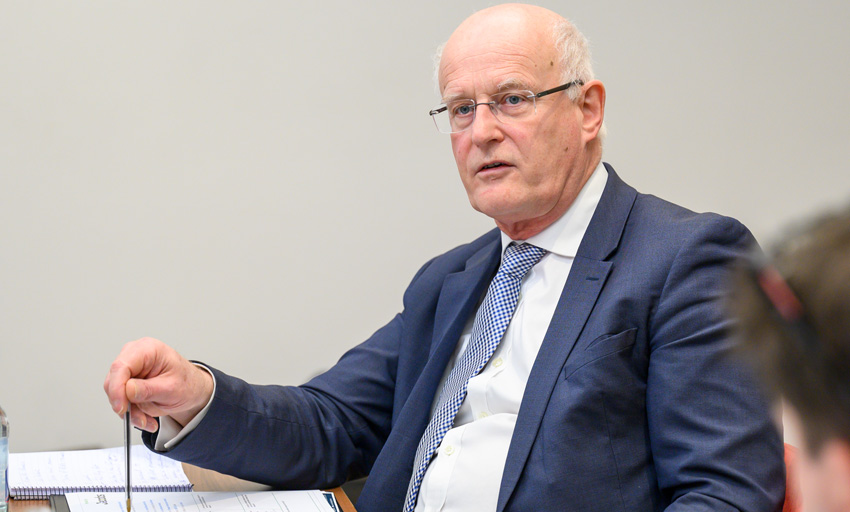
“There is a severe dearth of knowledge relating to cost of delivering resilience in the face of climate change and much more work needs to be done to identify that cost.” Pat Maher
Mitch Tunikowski
The planning discussion is one that we have been having for over a decade and something needs to change in the forthcoming Planning and Development Bill 2022. One solution I envisage is the creation of a joint infrastructure fund, encouraging collaboration and connectivity on resilience accelerator projects. This collaboration would encourage prioritisation of projects and put a different emphasis on delivery than has existed to date.
Marian Troy
Many organisations have performed exceptionally well in managing service delivery with existing infrastructure. Now, however, it is time for visionary and inter-generational investment. The electricity sector is a prime example, whereby pockets of vision from government have enabled high levels of renewable generation and ambitious offshore wind targets have enabled companies like SSE to bring major projects forward. Simultaneously, however, in the absence of a long-term vision for connection policy and grid reinforcement, Ireland has the potential to fall behind in the delivery of its renewable energy ambitions. We also need policies to deliver decarbonised back-up ‘on demand’ generation, from technologies such as carbon capture and storage or hydrogen as well as energy storage.
Paul Lennon
Long-term planning and long-term funding are the big-ticket items, but there are two additional spheres in which government support is critical. The first is to facilitate large scale, multi-party crisis management exercises to test resilience. We can all do our own exercises, but the multi-party exercises are of the greatest benefit to tease out whole system issues and impacts, and I believe government has a key role in delivering that. Secondly, emerging skills gaps are evident, and we are already seeing pinch points in sectors such as renewables and cybersecurity. Those gaps will also emerge in the more traditional industries if steps are not taken to put in place apprenticeship programmes, develop attractive careers, and reverse the talent drain out of Ireland.
Paul Hendrick
We need a much more predictable and steady means of delivering projects and activities. Take the Celtic Tiger experience as an example. We have had a cyclical stop-start process of building up a pipeline of work, a body of knowledge, and a resource community, only to stop dead in our tracks and lose those advantages. The damage of that experience is not fully realised, and it must be countered with long-term commitments. The soon-to-be-published All-Island Strategic Rail Review is an exemplar of long-term vision within government, setting out the vision of comprehensive strategic planning for between the next 50 and 100 years. That type of approach, if it were to be taken and applied to a multi-disciplinary all-island review, could be a major enabler of resilience building.
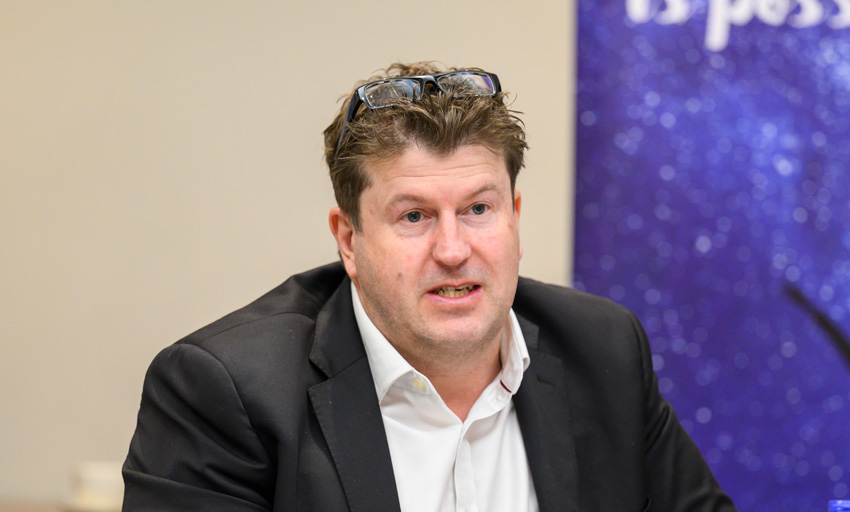
“These inter-generational projects need to sit outside the election cycle mindset.”
Mitch Tunikowski
Operating in an increasingly uncertain future, what is the single most significant threat to Ireland’s critical infrastructure?
Sean Laffey
The single most significant threat is climate change. We rely on the environment for our raw materials, such as water, and any damage done to that has ramifications. By way of example, we produce 1.8 billion litres of drinking water a day and to do so, we rely on the environment to take back the discharge from our wastewater treatment plants. If water sources dry up, we lose not only current water sources, but also the ability to suitably dilute our discharge.
Paul Lennon
Alongside climate change, I would identify the risks of cyber-attack and physical attack. Threats are becoming increasingly advanced and there is an obvious trend of attacks on infrastructure organisations, particularly in the energy sector. We are all having to work really hard to stay ahead of cyber threats and it is worrying that the advancement of technology, including artificial intelligence, has the potential to make these more difficult to anticipate. Physical attack is a risk too. Where previously underwater assets were regarded as extremely secure, the Nord Stream pipeline sabotage was a watershed moment.
Marian Troy
Climate change is a huge threat but in the energy sector we have the answers, we know how to decarbonise our system, and with the right policy signals we have already seen private investment come forward. I think the threat comes from delay to making decisions now which will enable the delivery of the generation mix and grid infrastructure we will need in five-, 10- or 15-years’ time.
Mitch Tunikowski
For me, the most significant threat is our funding models. If we continue to fund projects as we currently do, we will not address the problem. Dublin Port Tunnel is a prime example of a project that faced intense resistance but is now a critical component to how the city operates. These inter-generational projects need to sit outside the election cycle mindset. Future funding models, which recognise that, can release the current project bottleneck.
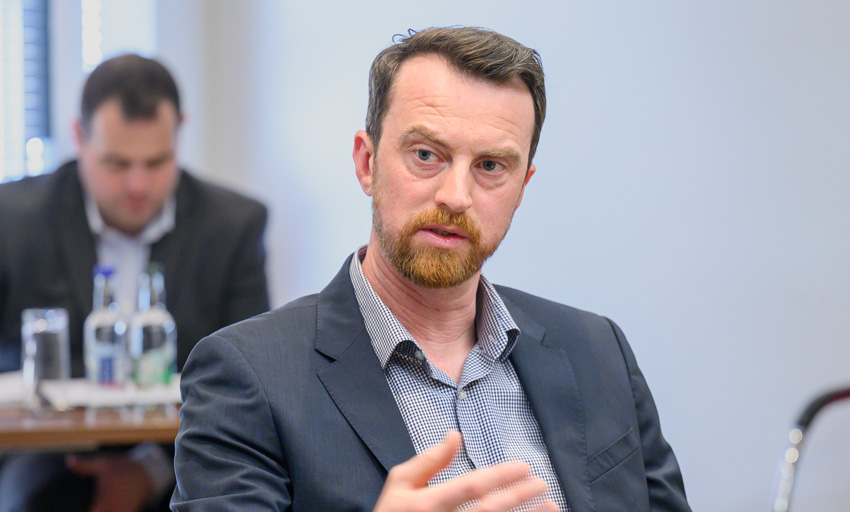
“In developing infrastructure we need to clearly communicate the benefits but also highlight the costs of not implementing projects.” Paul Lennon
Pat Maher
The cost of implementing effective climate change adaptation is a major challenge. There is a severe dearth of knowledge relating to cost of delivering resilience in the face of climate change and much more work needs to be done to identify that cost. Another challenge is in relation to road user charging and demand management. When you look at existing major assets like the M50 and similar arterial roads, there is virtually no scope for further expansion. We must ensure these routes are available for strategic traffic, such as haulage and logistics, rather than commuters who are finding it more convenient to travel by car rather than use public transport. Our recently produced report Project Bruce is a horizon scan of PPPs returning to state ownership and assesses the best models to ensure optimal management of the road network in relation to future demand.
Paul Hendrick
For me it is people. Talent recruitment and retention is a real challenge. The reality is that there are not enough people and skills to deliver the volume of construction required to maintain and develop Ireland’s infrastructure over the rest of this century. We can have all the ambition in the world but if we do not have the people to deliver, then these projects cannot happen. The skills challenge is being masked by other challenges in the system, such as planning and resourcing, causing delay upstream. There is an opportunity to act now to ensure the people challenge does not become a further hurdle downstream.
What opportunities exist to construct new and more resilient infrastructure into the future?
Paul Hendrick
The biggest opportunities lie in the climate change commitment to a net zero future. This is a once in a generation opportunity to drive forward with renewing and improving our infrastructure.
Mitch Tunikowski
Much of the critical infrastructure we currently use was built with a long-term vision, and it was delivered without the resources and the technology that we currently have. Providing we create the right ecosystem for visionary project delivery, there is an opportunity to channel that inter-generational mindset and build resilient infrastructure for the future.
Sean Laffey
This is not Ireland’s challenge alone. It is a systematic, global challenge. It is estimated that 40 per cent of the world’s population will have face a challenge of accessing clean drinking water at some point annually. Ireland is not a water stressed country, but we do have inadequate infrastructure in the wrong locations. The opportunity for resilience lies in building the right infrastructure, in the right places, and to the right standards. We need to shift the mindset of politicians in electoral cycles to foster statespeople with long-term vision and the drive to deliver longer-term goals.
Paul Lennon
Social and public engagement is going to be key throughout asset life cycles. In developing infrastructure we need to clearly communicate the benefits but also highlight the costs of not implementing projects. The idea of an over-arching strategy for the major infrastructure items for the whole country is appealing because it can facilitate broad community input from an early stage, induce a level of ownership, and promote the benefits in the long-term operation and maintenance of assets.
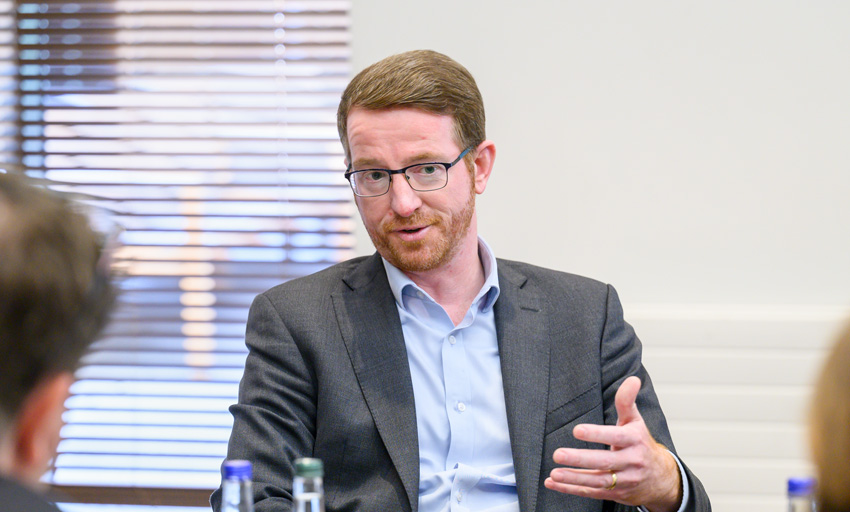
“There is an opportunity to act now to ensure the people challenge does not become a further hurdle downstream.” Paul Hendrick
Pat Maher
It is critical that the MetroLink is built. A city the size of Dublin should have a metro and it should be built with the mindset adopted in other European countries that it can be improved and expanded in the future. Having inter-generational vision will not just improve our infrastructure resilience but our social resilience too.
Paul Hendrick
Bravery is an opportunity in itself. I worked on the original Luas Green and Red Line projects, and it was vociferously criticised as being unnecessary. However, within a few months of its launch, the criticism being levelled was that it had not been built big enough. I have yet to see the delivery of a major infrastructure project built whereby the decision was subsequently regretted. With that in mind, there is a need to be brave in envisaging and delivering the critical infrastructure of the future.
Marian Troy
In relation to decarbonisation, opportunity lies in the fact that we have many of the solutions, and that we have many of the headline policy targets, but the challenge is implementation. When we get into delivery-mode, the benefits to Ireland will be manifold, including economic activity and reduced reliance on imported fossil fuels and associated volatile pricing. Underscoring this is the opportunity to empower the customer, through in-home generation like rooftop solar and demand side management. Empowerment can enable consumers to link big picture climate action ambitions with their tangible daily experiences.
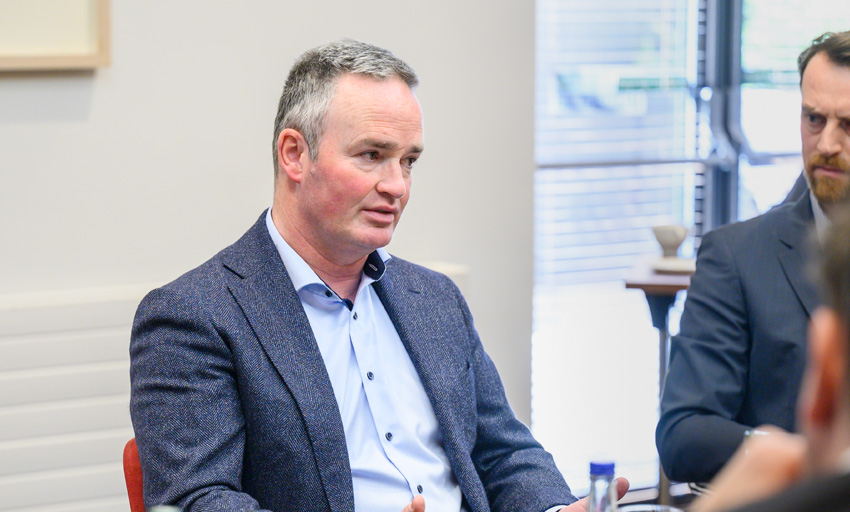
“We need to shift the mindset of politicians in electoral cycles to foster statespeople with long-term vision and the drive to deliver longer term goals.” Sean Laffey


